Urcean people and List of national symbols: Difference between pages
(Difference between pages)
m (→Religiosity) |
|||
| Line 1: | Line 1: | ||
{{ | This '''list of national symbols''' is arranged alphabetically by country. Some national symbols are officially designated, some are unofficial. The following list is not exhaustive and many countries consider other items to be national symbols; the categories included here are recognised by almost every nation. | ||
== National animals== | |||
{| class="wikitable sortable" | |||
|- | |||
!Country | |||
!Name of animal | |||
!Scientific name | |||
!Picture | |||
|- | |||
|{{flag|Alstin}} | |||
|Kjeldoran Wolf | |||
| | |||
| | |||
|- | |||
|{{flag|Burgundie}} | |||
|Leopard | |||
| | |||
| | |||
|- | |||
| | |||
{{flag|Caphiria}} | |||
| | |||
| | |||
| | |||
|- | |||
|{{flag|Carna}} | |||
|Unicorn | |||
| | |||
| | |||
|- | |||
|{{flag|Cartadania}} | |||
|{{wp|Orca}} | |||
|''{{wp|Orcinus orca}}'' | |||
|[[File:Orcinus Orca.jpg|250px|frameless]] | |||
|- | |||
|{{flag|Corumm}} | |||
|Badger | |||
| | |||
| | |||
|- | |||
|{{flag|Faneria}} | |||
|Deamhainnin Timber Wolf | |||
| | |||
| | |||
|- | |||
|{{flag|Kiravia}} | |||
| | |||
| | |||
| | |||
|- | |||
|{{flag|Metzetta}} | |||
|Alshar Moon Bear | |||
|''Ursus Alsharus'' | |||
|[[File:Asian Black Bear Ursus thibetanus by Dr. Raju Kasambe 05.jpg|250x250px]] | |||
|- | |||
|{{flag|Pelaxia}} | |||
|Jaguar | |||
|''Panthera onca'' | |||
|[[File:Onça do Pantanal.jpg|250px]] | |||
|- | |||
|{{flag|Urcea}} | |||
|Lion | |||
| | |||
| | |||
|- | |||
|{{flag|Vithinja}} | |||
|Wolf | |||
| | |||
| | |||
|- | |||
|{{flag|Yonderre}} | |||
|[[Kossaque Fox]] | |||
|''Vulpes cosaci'' | |||
|[[File:Vulpes_corsac.jpg|250px]] | |||
|- | |||
|} | |||
{ | ==National birds== | ||
| | {| class="wikitable" | ||
|- | |||
!Country | |||
!Bird name | |||
| | !Scientific name | ||
| | !Image | ||
| | !Notes | ||
| | |- | ||
| | |{{flag|Alstin}} | ||
| | |Alstinian Raven | ||
| | | | ||
| | | | ||
| | | | ||
|- | |||
|{{flag|Burgundie}} | |||
|{{wpl|Common Kingfisher}} [[Burgoignesc language|Burg]]: Blauet ordinaire | |||
|Alcedo atthis | |||
|[[File%3A%E2%99%82_Common_Kingfisher_(Alcedo_atthis)_Photograph_By_Shantanu_Kuveskar%2C_Mangaon%2C_Maharashtra%2C_India.jpg|250px|frameless]] | |||
| | |Noted for being viciously territorial, even against it's young, the Common Kingfisher was often used in the [[Holy Levantine Emipre|HLE]] as an allegory for the coastal urbanites of the [[Kingdom of Dericania]]. The concept of overseas trade was lost on the landed ignoramuses of the "inner kingdom". They could only comprehend the practice based on what they obversed in every day life, and the expelling of offspring by the Common Kingfisher seemed to match the pattern witnessed in the coastal towns and cities. | ||
| | |||
The ''' | When the coastal states were united under the banner of [[Burgundie]] the slanderous connotation had faded and the proud nature and vicious defense of it's territory favored the national narrative of the formation of the new nation it became the national bird. The blue on the badge of the flags of [[Burgundie]] is a formulation owned by the [[Government of Burgundie|government]] and is called Bleue della Blauet. | ||
|- | |||
|{{flag|Caphiria}} | |||
| | |||
| | |||
| | |||
| | |||
|- | |||
| {{flag|Carna}} | |||
| | |||
| | |||
| | |||
| | |||
|- | |||
|{{flag|Cartadania}} | |||
|{{wp|Harpy eagle}} | |||
|''Harpia harpyja'' | |||
|[[File:Harpia chega ao ninho com um macaco-prego.jpg|250px|frameless]] | |||
| | |||
|- | |||
|{{flag|Corumm}} | |||
|Giswi | |||
| | |||
| | |||
| | |||
|- | |||
|{{flag|Faneria}} | |||
|Gallic Rooster | |||
| | |||
| | |||
| | |||
|- | |||
|{{flag|Hendalarsk}} | |||
|Vandarch osprey | |||
|''Pandion haliaetus'' | |||
| | |||
|The osprey is a sacred bird in traditional Hendalarskara culture due to its close association with water and enjoys significant legal protections. | |||
|- | |||
|{{flag|Kiravia}} | |||
|Storm Petrel | |||
|''Oceanites oceanicus'' | |||
|[[File:Wilson's Storm-petrel 0A2A7191.jpg|200x200px]] | |||
| | |||
|- | |||
|{{flag|Metzetta}} | |||
|Metzettan Magpie | |||
|''Pica Serica'' | |||
| [[File:Korean magpie in Daejeon.jpg|200x200px]] | |||
|In Metzetta, the magpie (까치, "kkachi") is celebrated as a bird of great fortune, of sturdy spirit and a provider of prosperity and development. In the same vein of bringing fortune and luck, Metzettan children were also taught that when you lose a tooth, to throw it on the roof singing a song for the magpie; the bird will hear your song and bring you a new tooth. | |||
|- | |||
|{{flag|Pelaxia}} | |||
|Sarpedonian Condor | |||
|''Vultur gryphus'' | |||
|[[File:Colca-condor-c03.jpg|200x200px]] | |||
|- | |||
|{{flag|Urcea}} | |||
| | |||
Golden Eagle | |||
| | |||
| | |||
| | |||
|- | |||
|{{flag|Vithinja}} | |||
|Snowy Owl | |||
| | |||
| | |||
| | |||
|- | |||
|{{flag|Yonderre}} | |||
|Levantine Kestrel | |||
|''Falco levare'' | |||
||[[file:Common_kestrel_falco_tinnunculus.jpg|200x200px]] | |||
|} | |||
==National founders== | |||
{| class="wikitable" | |||
|- | |||
!Country | |||
!Founding father(s) | |||
!Image | |||
!Notes | |||
|- | |||
| | |||
{{flag|Alstin}} | |||
|[[Alstanus Ryefield]] | |||
| | |||
|An Ænglish Noble who initiated and led an exodus of Protestants from the [[Holy Levantine Empire]] to the [[Alstinian Isles]] beginning in 1557 during the [[Great Confessional War]]. He founded the city of [[Alstin (City)|Alstin]] in 1559 as a Protesrant refuge before becoming its became the first [[Kingdom of Alstin|King]] in 1565, reigning until his disappearance in 1573. | |||
|- | |||
|{{flag|Burgundie}} | |||
|Julian Marcilius Corvus Bergendus | |||
|[[File:Ritratto di settimio severo, 193-203 dc ca.jpg|250px|frameless]] | |||
|The [[Latinic]] commander who conquered the Impaxi tribes of the [[Ile Burgundie]], laying the foundation for the dominance of what would become [[Culture in Burgundie|Burgoignesc culture]] in the region. | |||
|- | |||
|{{flag|Caphiria}} | |||
| | |||
| | |||
| | |||
|- | |||
| | |||
{{flag|Carna}} | |||
| | |||
| | |||
| | |||
|- | |||
|{{flag|Cartadania}} | |||
| | |||
| | |||
| | |||
|- | |||
|{{flag|Corumm}} | |||
| | |||
| | |||
| | |||
|- | |||
|{{flag|Faneria}} | |||
| | |||
| | |||
| | |||
|- | |||
|{{flag|Hendalarsk}} | |||
| | |||
| | |||
| | |||
|- | |||
|{{flag|Kiravia}} | |||
|Emperor Ĥ | |||
|[[File:Emperor Ĥ.png|214x214px]] | |||
|Anointed 19,600 years ago, Ĥ reigned for 3,000 years, had five testicles, and was his own grandfather. | |||
|- | |||
|{{flag|Metzetta}} | |||
|[[Yang-jo]] | |||
| [[File:Yang-jo.jpg|214x214px]] | |||
|A legendary figure whose exploits are detailed in the [[Iyagi-seda]], said to have reigned for 55 years from 2333 BC to 2278 BC as [[Metzetta|Metzetta's]] first [[Emperor of Metzetta|Emperor]]. | |||
|- | |||
|{{flag|Urcea}} | |||
| | |||
| | |||
| | |||
|- | |||
|{{flag|Vithinja}} | |||
| | |||
| | |||
| | |||
|- | |||
|{{flag|Yonderre}} | |||
|[[Joanus de Martigueux]] | |||
|[[File:Joanus.png|214x214px]] | |||
|Joanus de Martigueux (10 June 1436 – 20 March 1502) was the founder and first [[Grand Duke of Yonderre|Grand Count of Yonderre]] from 1464 (de facto, 1494 de jure) until his death in 1502. de Martigueux's crusaders conquered [[East Gothica]] between 1458-1474. | |||
|} | |||
== | ==National flowers/plants == | ||
{| class="wikitable" | |||
|- | |||
!Country | |||
!Plant/flower name | |||
! | |||
Image | |||
!Notes | |||
|- | |||
|{{flag|Alstin}} | |||
|Rose | |||
| | |||
| | |||
|- | |||
|{{flag|Burgundie}} | |||
|Indigo | |||
| | |||
| | |||
|- | |||
|{{flag|Caphiria}} | |||
| | |||
| | |||
| | |||
|- | |||
|{{flag|Carna}} | |||
|Thistle | |||
| | |||
| | |||
|- | |||
| | |||
{{flag|Cartadania}} | |||
|Cherry Blossom | |||
| | |||
| | |||
|- | |||
|{{flag|Corumm}} | |||
| | |||
| | |||
| | |||
|- | |||
| | |||
{{flag|Faneria}} | |||
|Hummingbird Fuschia | |||
| | |||
| | |||
|- | |||
|{{flag|Hendalarsk}} | |||
| | |||
| | |||
| | |||
|- | |||
|{{flag|Kiravia}} | |||
|Supratemperate woodsorrel | |||
|[[File:Oxalis purpurea (Habitus) 2.jpg|200x200px]] | |||
| | |||
|- | |||
|{{flag|Metzetta}} | |||
|Magnolia Blossom | |||
|[[File:Magnolia flower Duke campus.jpg|200x200px]] | |||
|A stylised magnolia blossom features as the central motif on Metzetta's flag. | |||
|- | |||
|{{flag|Urcea}} | |||
|Edelweiss | |||
| | |||
| | |||
|- | |||
|{{flag|Vithinja}} | |||
| | |||
| | |||
| | |||
|- | |||
|{{flag|Yonderre}} | |||
|Carnation | |||
|[[File:W_carnation4051.jpg|200x200px]] | |||
| | |||
|} | |||
==National trees== | |||
{| class="wikitable" | |||
|- | |||
!Country | |||
!Tree name | |||
!Scentific name | |||
!Image | |||
!Notes | |||
|- | |||
|{{flag|Alstin}} | |||
|Oak | |||
| | |||
| | |||
| | |||
|- | |||
|{{flag|Burgundie}} | |||
|Nipa Palm | |||
| | |||
| | |||
| | |||
|- | |||
|{{flag|Caphiria}} | |||
| | |||
| | |||
| | |||
| | |||
|- | |||
|{{flag|Carna}} | |||
| | |||
| | |||
| | |||
| | |||
|- | |||
|{{flag|Cartadania}} | |||
|Mahogany | |||
| | |||
| | |||
| | |||
|- | |||
|{{flag|Corumm}} | |||
| | |||
| | |||
| | |||
| | |||
|- | |||
|{{flag|Faneria}} | |||
|Graybark Pine | |||
| | |||
| | |||
| | |||
|- | |||
|{{flag|Hendalarsk}} | |||
| | |||
| | |||
| | |||
| | |||
|- | |||
|{{flag|Kiravia}} | |||
|[[Metrea]]n Cypress | |||
|''Hesperocyparis metreana'' | |||
|[[File:Cupressus macrocarpa Pebblebeach.jpg|300x300px]] | |||
| | |||
|- | |||
|{{flag|Metzetta}} | |||
|Neutinamu | |||
|''Zelkova serrata'' | |||
|[[File:Dangsan-namu-suhan-village-korea PML9647.jpg|300x300px]] | |||
|In Metzetta, ''Zelkova serrata'' has been considered a symbol of protection for villages since ancient times, and can still be found planted at central points in cities, towns and villages around the country. The trees often stand next to small pavilions, serving both as shaded informal gathering points, and spaces for traditional rituals and ceremonies involving prayer and offerings to the tree. The oldest of these trees are estimated to be in excess of 1,000 years in age, and are protected as natural monuments. In 2013, a project was announced by the [[Emperor's Gardens]] to clone the zelkova trees that are identified as natural monuments, so their lineage will not be lost in case of disaster or death due to age. | |||
|- | |||
|{{flag|Urcea}} | |||
|Sycamore | |||
| | |||
| | |||
| | |||
|- | |||
|{{flag|Vithinja}} | |||
|Silver Birch | |||
| | |||
| | |||
| | |||
|- | |||
|{{flag|Yonderre}} | |||
|Oak | |||
|''Quercus'' | |||
|[[File:Raunkiaer.jpg|250x250px]] | |||
| | |||
|} | |||
==National dishes/foods== | |||
{| class="wikitable" | |||
|- | |||
!Country | |||
!Dish/food name | |||
!Image | |||
!Notes | |||
|- | |||
|{{flag|Alstin}} | |||
|Grilled Salmon | |||
| | |||
| | |||
|- | |||
|{{flag|Burgundie}} | |||
|Quail | |||
| | |||
| | |||
|- | |||
|{{flag|Caphiria}} | |||
| | |||
| | |||
| | |||
|- | |||
|{{flag|Carna}} | |||
|Haggis | |||
| | |||
| | |||
|- | |||
|{{flag|Cartadania}} | |||
|Moqueca | |||
| | |||
| | |||
|- | |||
|{{flag|Corumm}} | |||
| | |||
| | |||
| | |||
|- | |||
|{{flag|Faneria}} | |||
|Colcannon | |||
| | |||
| | |||
|- | |||
|{{flag|Hendalarsk}} | |||
|''Königsboden'' | |||
| | |||
|High-grade Hendalarskara Riesling, paired with the caviar of the Vandarch sturgeon. | |||
|- | |||
|{{flag|Kiravia}} | |||
|Potatoes | |||
| | |||
| | |||
|- | |||
|{{flag|Metzetta}} | |||
| | |||
| | |||
| | |||
|- | |||
|{{flag|Urcea}} | |||
|Pulled Pork | |||
| | |||
| | |||
|- | |||
|{{flag|Vithinja}} | |||
| | |||
| | |||
| | |||
|- | |||
|{{flag|Yonderre}} | |||
|[[Yonderian pastry]] | |||
|[[File:Danish_pastry.JPG|200x200px]] | |||
| | |||
|} | |||
==National fruits== | |||
{| class="wikitable" | |||
|- | |||
!Country | |||
!Fruit name | |||
!Image | |||
!Notes | |||
|- | |||
|{{flag|Alstin}} | |||
|Apple | |||
| | |||
| | |||
|- | |||
|{{flag|Burgundie}} | |||
| | |||
| | |||
| | |||
|- | |||
|{{flag|Caphiria}} | |||
| | |||
| | |||
| | |||
|- | |||
|{{flag|Carna}} | |||
| | |||
| | |||
| | |||
|- | |||
|{{flag|Cartadania}} | |||
|Pineapple | |||
| | |||
| | |||
|- | |||
|{{flag|Corumm}} | |||
| | |||
| | |||
| | |||
|- | |||
|{{flag|Faneria}} | |||
| | |||
| | |||
| | |||
|- | |||
|{{flag|Hendalarsk}} | |||
| | |||
| | |||
| | |||
|- | |||
|{{flag|Kiravia}} | |||
| | |||
| | |||
| | |||
|- | |||
|{{flag|Metzetta}} | |||
|Plum | |||
|[[File:2015-365-207 Plums! Plums! (20042200642).jpg|200x200px]] | |||
| | |||
|- | |||
|{{flag|Urcea}} | |||
|Grape | |||
| | |||
| | |||
|- | |||
|{{flag|Vithinja}} | |||
| | |||
| | |||
| | |||
|- | |||
|{{flag|Yonderre}} | |||
| | |||
| | |||
| | |||
|} | |||
==National drinks== | |||
{| class="wikitable" | |||
|- | |||
!Country | |||
!Drink name | |||
!Image | |||
!Notes | |||
|- | |||
|{{flag|Alstin}} | |||
|Bourbon Whiskey | |||
| | |||
| | |||
|- | |||
|{{flag|Burgundie}} | |||
|[[Burgundie Wine Region|Burgoignesc wine]], and tea | |||
|[[File:Dyonisos Paphos mosaic.jpg|250px|frameless]] | |||
|[[Culture in Burgundie#Alcohol]], [[Caffeine Consumption in Burgundie]] | |||
|- | |||
|{{flag|Caphiria}} | |||
| | |||
| | |||
| | |||
|- | |||
|{{flag|Carna}} | |||
|Carnish Whiskey | |||
| | |||
| | |||
|- | |||
|{{flag|Cartadania}} | |||
|Caipirinha | |||
| | |||
| | |||
|- | |||
|{{flag|Corumm}} | |||
|[[Slozo]] | |||
| | |||
| | |||
|- | |||
|{{flag|Faneria}} | |||
| | |||
| | |||
| | |||
|- | |||
|{{flag|Hendalarsk}} | |||
|[[Jenwer]] | |||
| | |||
| | |||
|- | |||
|{{flag|Kiravia}} | |||
| | |||
| | |||
| | |||
|- | |||
|{{flag|Metzetta}} | |||
|Soju | |||
|[[File:Soju.jpg|200x200px]] | |||
| | |||
|- | |||
|{{flag|Urcea}} | |||
|Goldwheat | |||
| | |||
| | |||
|- | |||
|{{flag|Vithinja}} | |||
| | |||
| | |||
| | |||
|- | |||
|{{flag|Yonderre}} | |||
|[[Chevalier Vert]] | |||
|[[File:Schnapsglas_gr%C3%BCner_Chartreuse.jpg|250x250px]] | |||
|An herbal liqueur made since 1602 based on a recipe by [[Siegmar von Willing]] | |||
|} | |||
== | ==National sports== | ||
{{ | {| class="wikitable" | ||
|- | |||
!Country | |||
!Sport | |||
!Image | |||
!Notes | |||
|- | |||
|{{flag|Alstin}} | |||
|Association football | |||
| | |||
| | |||
|- | |||
|{{flag|Burgundie}} | |||
|[[Horse racing in Levantia|Steeplechase]], and {{wpl|Fleet racing}} | |||
|[[File:Steeplechase_(1257926029).jpg|250px|frameless]][[File:Fleet_Racing_with_Maltese_Falcon_in_the_background_(7070289697).jpg|250px|frameless]] | |||
|[[Horse_racing_in_Levantia#Burgundie]] | |||
|- | |||
|{{flag|Caphiria}} | |||
| | |||
| | |||
| | |||
|- | |||
|{{flag|Carna}} | |||
|Association football | |||
| | |||
| | |||
|- | |||
|{{flag|Cartadania}} | |||
|Association football | |||
| | |||
| | |||
|- | |||
|{{flag|Corumm}} | |||
| | |||
| | |||
| | |||
|- | |||
|{{flag|Faneria}} | |||
| | |||
| | |||
| | |||
|- | |||
|{{flag|Hendalarsk}} | |||
|Association football | |||
| | |||
| | |||
|- | |||
|{{flag|Kiravia}} | |||
| | |||
| | |||
| | |||
|- | |||
|{{flag|Metzetta}} | |||
|Ssireum | |||
|[[File:Korea-2008 Gyeongju Citizens' Athletics Festival-Ssireum-01.jpg|200x200px]] | |||
|Ssireum is a traditional kind of wrestling which takes place in a sandy ring. | |||
|- | |||
|{{flag|Urcea}} | |||
|Baseball | |||
| | |||
| | |||
|- | |||
|{{flag|Vithinja}} | |||
|Ice Hockey | |||
| | |||
| | |||
|- | |||
|{{flag|Yonderre}} | |||
| | |||
| | |||
| | |||
|} | |||
[[ | ==National instrument== | ||
[[ | {| class="wikitable" | ||
[[Category: | |- | ||
[[Category: | !Country | ||
!Instrument | |||
! style="border-color:inherit;" |Description <br /><small>Recording</small> | |||
! style="border-color:inherit;" |Image | |||
|- | |||
|{{flag|Alstin}} | |||
|Guitar | |||
| style="border-color:inherit;" | | |||
| style="border-color:inherit;" | | |||
|- | |||
|{{flag|Burgundie}} | |||
| | |||
| style="border-color:inherit;" | | |||
| style="border-color:inherit;" | | |||
|- | |||
|{{flag|Caphiria}} | |||
| | |||
| style="border-color:inherit;" | | |||
| style="border-color:inherit;" | | |||
|- | |||
|{{flag|Carna}} | |||
| | |||
| style="border-color:inherit;" | | |||
| style="border-color:inherit;" | | |||
|- | |||
|{{flag|Cartadania}} | |||
| | |||
| style="border-color:inherit;" | | |||
| style="border-color:inherit;" | | |||
|- | |||
|{{flag|Corumm}} | |||
| | |||
| style="border-color:inherit;" | | |||
| style="border-color:inherit;" | | |||
|- | |||
|{{flag|Faneria}} | |||
| | |||
| style="border-color:inherit;" | | |||
| style="border-color:inherit;" | | |||
|- | |||
|{{flag|Hendalarsk}} | |||
| | |||
| style="border-color:inherit;" | | |||
| style="border-color:inherit;" | | |||
|- | |||
|{{flag|Kiravia}} | |||
| {{wp|Mayonnaise}} | |||
| style="border-color:inherit;" |An {{wp|emulsion}} of oil, egg yolk, and an acid - either vinegar or lemon juice. | |||
| style="border-color:inherit;" |[[File:Mayonnaise (1).jpg|200x200px]] | |||
|- | |||
|{{flag|Metzetta}} | |||
|Tanso | |||
| style="border-color:inherit;" |A traditional end-blown flute made from bamboo. | |||
| style="border-color:inherit;" |[[File:Danso.jpg|200x200px]] | |||
|- | |||
|{{flag|Urcea}} | |||
| | |||
| style="border-color:inherit;" | | |||
| style="border-color:inherit;" | | |||
|- | |||
|{{flag|Vithinja}} | |||
| | |||
| style="border-color:inherit;" | | |||
| style="border-color:inherit;" | | |||
|- | |||
|{{flag|Yonderre}} | |||
| | |||
| style="border-color:inherit;" | | |||
| style="border-color:inherit;" | | |||
|} | |||
==National personification== | |||
{| class="wikitable" | |||
|- | |||
!Country | |||
! style="border-color:inherit;" |Image | |||
! style="border-color:inherit;" |Personification | |||
! style="border-color:inherit;" |Animal/object used for the same purpose | |||
|- | |||
|{{flag|Alstin}} | |||
| | |||
| style="border-color:inherit;" |Alstinia | |||
| style="border-color:inherit;" |Uncle Robert | |||
|- | |||
|{{flag|Burgundie}} | |||
|[[File:Marin Estelle.png|250px|frameless]] | |||
| style="border-color:inherit;" |Marin-Estelle | |||
| style="border-color:inherit;" | [[Brother Auggie]] (satirical), <br>Common Kingfisher (historical and satirical) | |||
|- | |||
|{{flag|Caphiria}} | |||
| | |||
| style="border-color:inherit;" | | |||
| style="border-color:inherit;" | | |||
|- | |||
|{{flag|Carna}} | |||
| | |||
| style="border-color:inherit;" | | |||
| style="border-color:inherit;" | | |||
|- | |||
|{{flag|Cartadania}} | |||
| | |||
| style="border-color:inherit;" |Alexandria | |||
| style="border-color:inherit;" | | |||
|- | |||
|{{flag|Corumm}} | |||
| | |||
| style="border-color:inherit;" | | |||
| style="border-color:inherit;" | | |||
|- | |||
|{{flag|Faneria}} | |||
| | |||
| style="border-color:inherit;" | | |||
| style="border-color:inherit;" | | |||
|- | |||
|{{flag|Hendalarsk}} | |||
| | |||
| style="border-color:inherit;" | | |||
| style="border-color:inherit;" | | |||
|- | |||
|{{flag|Kiravia}} | |||
| | |||
| style="border-color:inherit;" | | |||
| style="border-color:inherit;" | | |||
|- | |||
|{{flag|Metzetta}} | |||
| | |||
| style="border-color:inherit;" | | |||
| style="border-color:inherit;" | | |||
|- | |||
|{{flag|Urcea}} | |||
| | |||
| style="border-color:inherit;" | | |||
| style="border-color:inherit;" | | |||
|- | |||
|{{flag|Vithinja}} | |||
| | |||
| style="border-color:inherit;" | | |||
| style="border-color:inherit;" | | |||
|- | |||
|{{flag|Yonderre}} | |||
| style="border-color:inherit;" |[[File:Green Knight.png|250px]] | |||
| style="border-color:inherit;" |The [[Green Knight]] | |||
| | |||
|} | |||
==Other national symbols== | |||
{| class="wikitable" | |||
|- | |||
!Country | |||
! style="border-color:inherit;" |Symbol type | |||
! style="border-color:inherit;" |Symbol name | |||
! style="border-color:inherit;" |Image | |||
!Notes | |||
|- | |||
|{{flag|Alstin}} | |||
| Mineral | |||
| style="border-color:inherit;" | Jade | |||
| style="border-color:inherit;" | | |||
| | |||
|- | |||
|{{flag|Burgundie}} | |||
| | |||
| style="border-color:inherit;" | | |||
| style="border-color:inherit;" | | |||
| | |||
|- | |||
|{{flag|Caphiria}} | |||
| | |||
| style="border-color:inherit;" | | |||
| style="border-color:inherit;" | | |||
| | |||
|- | |||
|{{flag|Carna}} | |||
| | |||
| style="border-color:inherit;" | | |||
| style="border-color:inherit;" | | |||
| | |||
|- | |||
|{{flag|Cartadania}} | |||
| | |||
| style="border-color:inherit;" | | |||
| style="border-color:inherit;" | | |||
| | |||
|- | |||
|{{flag|Corumm}} | |||
| | |||
| style="border-color:inherit;" | | |||
| style="border-color:inherit;" | | |||
| | |||
|- | |||
|{{flag|Faneria}} | |||
| | |||
| style="border-color:inherit;" | | |||
| style="border-color:inherit;" | | |||
| | |||
|- | |||
|{{flag|Hendalarsk}} | |||
| | |||
| style="border-color:inherit;" | | |||
| style="border-color:inherit;" | | |||
| | |||
|- | |||
|{{flag|Kiravia}} | |||
| Mineral | |||
| style="border-color:inherit;" | {{wp|Diopside}} with {{wp|asterism}} | |||
| style="border-color:inherit;" | [[File:Diopside cabochon Inde.jpg|200x200px]] | |||
| Dark green gemstone with a four-pointed asterism, resembling the Kiravian flag. | |||
|- | |||
|{{flag|Metzetta}} | |||
| | |||
| style="border-color:inherit;" | | |||
| style="border-color:inherit;" | | |||
| | |||
|- | |||
|{{flag|Urcea}} | |||
| | |||
| style="border-color:inherit;" | | |||
| style="border-color:inherit;" | | |||
| | |||
|- | |||
|{{flag|Vithinja}} | |||
| | |||
| style="border-color:inherit;" | | |||
| style="border-color:inherit;" | | |||
| | |||
|- | |||
|{{flag|Yonderre}} | |||
|Fossil | |||
| style="border-color:inherit;" |''[[Joanusaurus]]'' | |||
| style="border-color:inherit;" |[[File:Allosaurus_SDNHM_(1).jpg|200px]] | |||
| | |||
|} | |||
{{B.I.S NavBox}} | |||
[[Category:Bureau of International Statistics]] | |||
[[Category:Culture]] | |||
Revision as of 18:00, 1 December 2022
This list of national symbols is arranged alphabetically by country. Some national symbols are officially designated, some are unofficial. The following list is not exhaustive and many countries consider other items to be national symbols; the categories included here are recognised by almost every nation.
National animals
| Country | Name of animal | Scientific name | Picture |
|---|---|---|---|
| Kjeldoran Wolf | |||
| Leopard | |||
| Unicorn | |||
| Orca | Orcinus orca | 
| |
| Badger | |||
| Deamhainnin Timber Wolf | |||
| Alshar Moon Bear | Ursus Alsharus | 
| |
| Jaguar | Panthera onca | 
| |
| Lion | |||
| Wolf | |||
| Kossaque Fox | Vulpes cosaci | 
|
National birds
| Country | Bird name | Scientific name | Image | Notes |
|---|---|---|---|---|
| Alstinian Raven | ||||
| Common Kingfisher Burg: Blauet ordinaire | Alcedo atthis | 
|
Noted for being viciously territorial, even against it's young, the Common Kingfisher was often used in the HLE as an allegory for the coastal urbanites of the Kingdom of Dericania. The concept of overseas trade was lost on the landed ignoramuses of the "inner kingdom". They could only comprehend the practice based on what they obversed in every day life, and the expelling of offspring by the Common Kingfisher seemed to match the pattern witnessed in the coastal towns and cities.
When the coastal states were united under the banner of Burgundie the slanderous connotation had faded and the proud nature and vicious defense of it's territory favored the national narrative of the formation of the new nation it became the national bird. The blue on the badge of the flags of Burgundie is a formulation owned by the government and is called Bleue della Blauet. | |
| Harpy eagle | Harpia harpyja | 
|
||
| Giswi | ||||
| Gallic Rooster | ||||
| Vandarch osprey | Pandion haliaetus | The osprey is a sacred bird in traditional Hendalarskara culture due to its close association with water and enjoys significant legal protections. | ||
| Storm Petrel | Oceanites oceanicus | 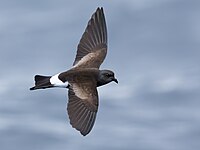
|
||
| Metzettan Magpie | Pica Serica | 
|
In Metzetta, the magpie (까치, "kkachi") is celebrated as a bird of great fortune, of sturdy spirit and a provider of prosperity and development. In the same vein of bringing fortune and luck, Metzettan children were also taught that when you lose a tooth, to throw it on the roof singing a song for the magpie; the bird will hear your song and bring you a new tooth. | |
| Sarpedonian Condor | Vultur gryphus | 
| ||
|
Golden Eagle |
||||
| Snowy Owl | ||||
| Levantine Kestrel | Falco levare | 
|
National founders
| Country | Founding father(s) | Image | Notes |
|---|---|---|---|
| Alstanus Ryefield | An Ænglish Noble who initiated and led an exodus of Protestants from the Holy Levantine Empire to the Alstinian Isles beginning in 1557 during the Great Confessional War. He founded the city of Alstin in 1559 as a Protesrant refuge before becoming its became the first King in 1565, reigning until his disappearance in 1573. | ||
| Julian Marcilius Corvus Bergendus | 
|
The Latinic commander who conquered the Impaxi tribes of the Ile Burgundie, laying the foundation for the dominance of what would become Burgoignesc culture in the region. | |
| Emperor Ĥ | 
|
Anointed 19,600 years ago, Ĥ reigned for 3,000 years, had five testicles, and was his own grandfather. | |
| Yang-jo | 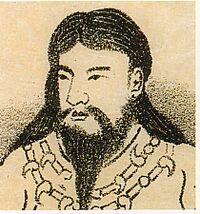
|
A legendary figure whose exploits are detailed in the Iyagi-seda, said to have reigned for 55 years from 2333 BC to 2278 BC as Metzetta's first Emperor. | |
| Joanus de Martigueux | 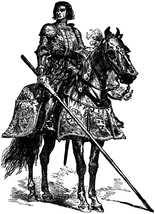
|
Joanus de Martigueux (10 June 1436 – 20 March 1502) was the founder and first Grand Count of Yonderre from 1464 (de facto, 1494 de jure) until his death in 1502. de Martigueux's crusaders conquered East Gothica between 1458-1474. |
National flowers/plants
| Country | Plant/flower name |
Image |
Notes |
|---|---|---|---|
| Rose | |||
| Indigo | |||
| Thistle | |||
| Cherry Blossom | |||
| Hummingbird Fuschia | |||
| Supratemperate woodsorrel | 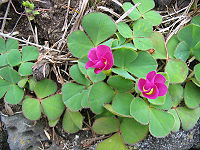
|
||
| Magnolia Blossom | 
|
A stylised magnolia blossom features as the central motif on Metzetta's flag. | |
| Edelweiss | |||
| Carnation | 
|
National trees
| Country | Tree name | Scentific name | Image | Notes |
|---|---|---|---|---|
| Oak | ||||
| Nipa Palm | ||||
| Mahogany | ||||
| Graybark Pine | ||||
| Metrean Cypress | Hesperocyparis metreana | 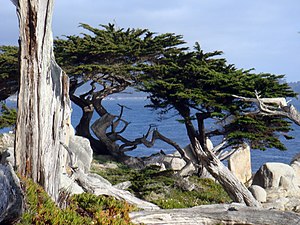
|
||
| Neutinamu | Zelkova serrata | 
|
In Metzetta, Zelkova serrata has been considered a symbol of protection for villages since ancient times, and can still be found planted at central points in cities, towns and villages around the country. The trees often stand next to small pavilions, serving both as shaded informal gathering points, and spaces for traditional rituals and ceremonies involving prayer and offerings to the tree. The oldest of these trees are estimated to be in excess of 1,000 years in age, and are protected as natural monuments. In 2013, a project was announced by the Emperor's Gardens to clone the zelkova trees that are identified as natural monuments, so their lineage will not be lost in case of disaster or death due to age. | |
| Sycamore | ||||
| Silver Birch | ||||
| Oak | Quercus | 
|
National dishes/foods
| Country | Dish/food name | Image | Notes |
|---|---|---|---|
| Grilled Salmon | |||
| Quail | |||
| Haggis | |||
| Moqueca | |||
| Colcannon | |||
| Königsboden | High-grade Hendalarskara Riesling, paired with the caviar of the Vandarch sturgeon. | ||
| Potatoes | |||
| Pulled Pork | |||
| Yonderian pastry | 
|
National fruits
| Country | Fruit name | Image | Notes |
|---|---|---|---|
| Apple | |||
| Pineapple | |||
| Plum | 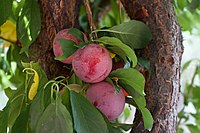
|
||
| Grape | |||
National drinks
| Country | Drink name | Image | Notes |
|---|---|---|---|
| Bourbon Whiskey | |||
| Burgoignesc wine, and tea | 
|
Culture in Burgundie#Alcohol, Caffeine Consumption in Burgundie | |
| Carnish Whiskey | |||
| Caipirinha | |||
| Slozo | |||
| Jenwer | |||
| Soju | 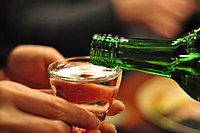
|
||
| Goldwheat | |||
| Chevalier Vert | 
|
An herbal liqueur made since 1602 based on a recipe by Siegmar von Willing |
National sports
| Country | Sport | Image | Notes |
|---|---|---|---|
| Association football | |||
| Steeplechase, and Fleet racing | 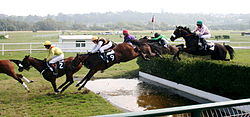 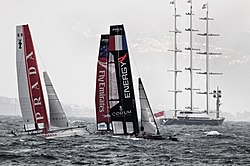
|
Horse_racing_in_Levantia#Burgundie | |
| Association football | |||
| Association football | |||
| Association football | |||
| Ssireum | 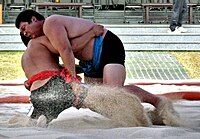
|
Ssireum is a traditional kind of wrestling which takes place in a sandy ring. | |
| Baseball | |||
| Ice Hockey | |||
National instrument
| Country | Instrument | Description Recording |
Image |
|---|---|---|---|
| Guitar | |||
| Mayonnaise | An emulsion of oil, egg yolk, and an acid - either vinegar or lemon juice. | 
| |
| Tanso | A traditional end-blown flute made from bamboo. | 
| |
National personification
| Country | Image | Personification | Animal/object used for the same purpose |
|---|---|---|---|
| Alstinia | Uncle Robert | ||
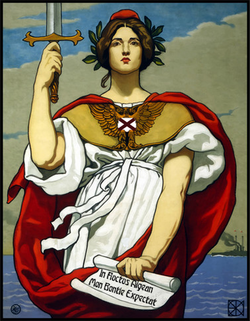
|
Marin-Estelle | Brother Auggie (satirical), Common Kingfisher (historical and satirical) | |
| Alexandria | |||
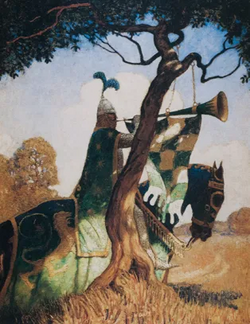
|
The Green Knight |
Other national symbols
| Country | Symbol type | Symbol name | Image | Notes |
|---|---|---|---|---|
| Mineral | Jade | |||
| Mineral | Diopside with asterism | 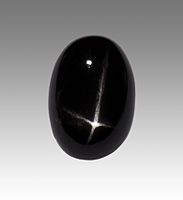
|
Dark green gemstone with a four-pointed asterism, resembling the Kiravian flag. | |
| Fossil | Joanusaurus | 
|